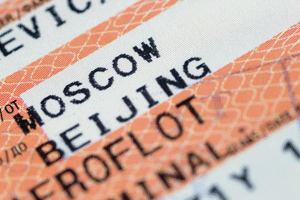Russian Arbitrage: pipedream or Eastern Promise?
on
Russian Arbitrage: pipedream or Eastern Promise?
Things are looking up for Russia. Prime Minister Putin finally opened a new pipeline exporting east Siberian oil to the Chinese mainland. Dubbed the Eastern Siberia-Pacific Ocean (ESPO) link, the plan is to pump 1.6 million barrels per day towards the Pacific Ocean over the next few years. The rationale is clear. Diversifying supplies to Asia offers Russia what all energy producers want: leverage over competing consumers in the East and West. Keep Asia keen, treat Europe mean. Cash in on the premium.
 |
With China developing a taste for Russian oil, we can expect gas to follow. The political infrastructure is partially in place under a memorandum of understanding struck between Gazprom and CNPC in 2006. Pricing formulas have been the main stumbling block so far, but things could still come together. China knows its gas demand is rapidly rising, while Russia will be more flexible on pricing provided it can maintain some kind of oil price link. It knows China can draw on Turkmen and Australian supplies to fill the gaps in the short term, and that failure to become Beijing’s supplier of choice would be a costly mistake. It would create additional Asian price pressures from Japan and South Korea, and allow European consumers to drive down gas prices further. Moscow needs little reminding that oil price links are looking decidedly shaky and ‘gas on gas’ competition is becoming more credible.
But if Russia managed to feed the Chinese gas market, this narrative would be turned on its head. Moscow would be well placed to set price, volumes and the associated political terms to consumers in the East and West. It would also do so when markets have tightened, probably around 2014-15.
Doomsday scenario
Some of the brighter folks in Brussels have been fearful of precisely this prospect. The ‘doomsday’ scenario is if Russia links Sakhalin and East Siberian reserves with Western Siberian fields. This would give Moscow the choice of LNG or pipeline exports, alongside far greater flexibility to feed Atlantic Basin (Western) or Pacific Basin (Eastern) gas markets.
If efforts to collude on gas prices with other European suppliers are intensified and control of Central Asian exports routes under Russian tutelage are tightened, the outlook for European consumers will be very bleak. This is before considering Russian upstream investment in West Africa, or major pipelines such as Nordstream that will rewrite energy (in)security for Eastern Europe. Creeping gas cartelisation some might say? Probably not. Encirclement strategies towards greater price collusion across key producers? That should be taken as a given. Just check the latest gas deal between Moscow and Azerbaijan as a reference point: South Stream undoubtedly has the whip hand over the Nabucco pipeline once more in terms of upstream reserves.
Putin on a pedestal
So what’s the catch? Surely Russian ‘arbitrage’ between such markets could not be that easy? Well, no, not quite. Geography is one major problem – hydrocarbons are spread too far across Russia to ever bring them under one truly integrated grid. The second, interrelated point is a chronic lack of investment. Beyond Gazprom’s international bluster, the Kremlin failed to invest during the energy good times where it mattered most, in Russia itself. Oil and gas production could now likely face depletion as a result.
Attracting increased foreign investment could help offset this to some degree, but here’s the final rub: if Moscow fails to resist the temptation of playing off competing Asian and European markets as it goes along, before the pipelines are welded and fields flow, then oil majors in the East and West might realise that investing in upstream Russian assets is not in their best national interests.
In the end, consumers in Europe and Asia should be focusing much more on reducing their energy demands, integrating grids, improving efficiency and developing alternative energy sources. This is the only credible alternative to putting Putin back on an energy pedestal in the longer term. That proved dangerous in the 2000s, and would be again, lest Brussels and Beijing inadvertently conspire to make Russian arbitrage a self fulfilling prophecy.


Discussion (0 comments)